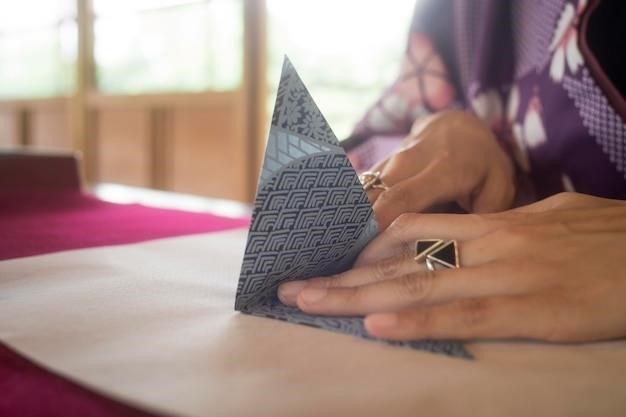Kawandi quilting is a fascinating and rewarding craft, and there are numerous resources available to help you learn. This video will show the tips and techniques I have found out …
What is Kawandi Quilting?
Kawandi quilting, also known as Siddi quilting, is a traditional craft originating in Western India, brought to the region by African slaves. It’s a unique and beautiful technique that involves hand-stitching fabric scraps together to create intricate patterns and designs. The technique is characterized by its use of small, tightly stitched pieces of fabric, often in vibrant colors and patterns. The quilts are known for their durability and the intricate stitching, which can be both decorative and functional. They can be used for a variety of purposes, including bedding, clothing, and wall hangings.
The History of Kawandi Quilting
The origins of Kawandi quilting can be traced back to the Siddi community, descendants of African slaves who were brought to India centuries ago. The Siddi people brought their quilting traditions with them, and these traditions evolved and adapted over time to incorporate local materials and styles. These quilts were often made from scraps of fabric, reflecting the resourceful nature of the Siddi people. The tradition has been passed down through generations, and Kawandi quilts continue to be a cherished part of Indian culture, representing a unique blend of African and Indian heritage.
Kawandi quilting is known for its unique stitching techniques, which involve a combination of hand stitching and machine quilting. The most common method is hand stitching, where the quilter uses a running stitch to secure the fabric layers together. This technique allows for intricate designs and patterns, as the quilter can easily maneuver the needle and thread. Machine quilting is also used in Kawandi quilting, primarily for quilting larger areas or for creating a more modern look. The machine quilting technique involves using a sewing machine to stitch through the fabric layers, often using a walking foot to ensure even stitching. Whether you choose to hand stitch or machine quilt, both techniques offer unique possibilities for creating beautiful and intricate Kawandi quilts.
Hand Stitching
Hand stitching is the traditional method for creating Kawandi quilts and is often seen as the hallmark of this technique. It requires patience and precision but allows for greater control and detail in the stitching. A running stitch is commonly used, where the needle is passed through the fabric layers, creating a series of small, even stitches. This technique is versatile and allows for intricate designs, as the quilter can easily maneuver the needle and thread around curves and corners. Hand stitching also allows for the incorporation of various embellishments, such as beads, buttons, or embroidery, adding a unique touch to the quilt. While it may take longer than machine quilting, hand stitching provides a sense of mindfulness and allows the quilter to connect with the craft in a more intimate way.
Kawandi Quilting Techniques
Machine Quilting
While hand stitching is the traditional method for Kawandi quilts, machine quilting offers a faster and more efficient approach. This method involves using a sewing machine to stitch the layers of the quilt together, creating a more durable and finished look. Machine quilting allows for greater speed and consistency in stitching, particularly when working with larger quilts. It also provides an opportunity to explore different quilting patterns and designs using the machine’s various stitch options. However, machine quilting can be challenging to master, especially for beginners. It requires practice and familiarity with the machine’s settings and capabilities. While it may not offer the same level of intricate detail as hand stitching, machine quilting provides a practical and efficient way to create beautiful and durable Kawandi quilts.
Gathering the right materials is crucial for a successful Kawandi quilting project. The choice of materials will depend on the size and complexity of your quilt, as well as your personal preference. Here are some essential materials you’ll need⁚
Fabric
The heart of any Kawandi quilt lies in the fabric selection. Traditional Kawandi quilts often feature a vibrant mix of scrap fabrics, reflecting a resourceful approach to crafting. You can opt for cotton fabrics, which are widely available and easy to work with. Silk fabrics can add a touch of elegance and a luxurious feel to your quilt. Consider using fabrics with interesting textures and patterns, as they will add depth and character to your quilt. Remember, the beauty of Kawandi quilting lies in its ability to create a unique and personal piece of art.
Thread
Choosing the right thread is crucial for Kawandi quilting. Embroidery floss is a popular choice due to its durability and wide range of colors. DMC, Cosmos, and other brands offer a vast selection. Perle cotton, available in sizes 8 and 12, is another excellent option. The most common size is 8, offering a balance of strength and fineness. Consider the weight of your fabric when selecting thread. Thicker fabrics may require a heavier thread, while lighter fabrics can handle a finer thread. For a consistent look, opt for a single strand of thread. Remember, the thread is the backbone of your Kawandi quilt, so choose wisely to ensure a beautiful and lasting piece.
Materials Needed for Kawandi Quilting
Other Supplies
Beyond fabric and thread, a few additional supplies will enhance your Kawandi quilting experience. A thimble is essential for protecting your fingers from needle pricks, especially during hand stitching. Sharp needles, sized appropriately for your thread, will ensure smooth stitching. A needle threader can be a lifesaver for those with less-than-perfect eyesight or dexterity. A seam ripper is a handy tool for correcting mistakes, and a ruler or measuring tape will help you maintain accuracy in your piecing. A rotary cutter and cutting mat can be used for precise fabric cutting, though hand-cutting with scissors is also a viable option. Lastly, consider investing in a good-quality iron and ironing board to press your fabric and create crisp seams. These additional supplies will contribute to a more enjoyable and efficient Kawandi quilting experience.
The world of Kawandi quilting is readily accessible, with numerous tutorials and resources available to guide you on your creative journey. Online platforms like YouTube offer a wealth of video tutorials, with many featuring skilled artisans demonstrating the intricate techniques of Kawandi quilting. These tutorials provide step-by-step instructions, covering everything from basic stitching techniques to more advanced designs. Websites dedicated to quilting and craft projects also offer valuable resources, including written instructions, patterns, and inspiring examples of Kawandi quilts. For those who prefer a more tactile learning experience, books and magazines dedicated to quilting often feature sections on Kawandi quilting, providing detailed explanations and visual inspiration. No matter your learning style, there’s a resource available to help you embark on your Kawandi quilting adventure.
Online Tutorials
The digital realm offers a treasure trove of Kawandi quilting tutorials, making it easier than ever to learn this beautiful craft. YouTube stands as a prominent platform, brimming with video tutorials showcasing skilled artisans demonstrating the intricate techniques of Kawandi quilting. These tutorials provide step-by-step instructions, guiding you through the process, from basic stitching techniques to more complex designs. Many tutorials feature close-up shots, allowing you to clearly see the intricate details and nuances of each step. Some tutorials even offer downloadable patterns and resources, further enhancing your learning experience. Whether you’re a beginner or a seasoned quilter, online tutorials provide a convenient and accessible way to delve into the world of Kawandi quilting.
Kawandi Quilt Tutorials and Resources
Books and Magazines

For those who prefer a more tangible learning experience, books and magazines offer a wealth of information on Kawandi quilting. These publications often feature detailed instructions, accompanied by beautiful photographs and illustrations, providing a visual guide to the craft. Books dedicated to Kawandi quilting delve into the history, techniques, and variations of this traditional art form, while quilting magazines often feature articles, patterns, and projects that incorporate Kawandi elements. These resources provide a comprehensive understanding of the craft, inspiring you to create your own stunning Kawandi quilts. Whether you prefer a step-by-step guide or a collection of inspiring ideas, books and magazines offer a valuable resource for Kawandi quilting enthusiasts.
To truly appreciate the beauty and artistry of Kawandi quilting, it’s essential to immerse yourself in the world of inspiration. Explore the work of renowned Kawandi quilters, whose creations showcase the intricate techniques and vibrant colors that define this craft. From the delicate stitchery to the bold geometric patterns, their quilts offer a glimpse into the rich cultural heritage of Kawandi quilting. Browse online galleries and social media platforms to discover a diverse range of Kawandi quilt styles, from traditional designs to contemporary interpretations. Let these inspiring creations ignite your creativity and fuel your passion for Kawandi quilting.
Famous Kawandi Quilters
The world of Kawandi quilting boasts a number of talented artisans who have dedicated themselves to preserving and showcasing this traditional craft. Margaret Fabrizio, a renowned quilt artist, has been instrumental in promoting Kawandi quilting through her workshops and online tutorials. Her beautiful quilts, often featuring vibrant colors and intricate patterns, have inspired countless quilters worldwide. Other notable Kawandi quilters include Mel Beach, whose innovative approach to Kawandi quilting has earned her widespread acclaim. Her quilts, often incorporating modern design elements, demonstrate the versatility of this traditional technique. By studying the work of these talented individuals, you can gain valuable insights into the history, techniques, and artistic possibilities of Kawandi quilting.
Kawandi Quilt Inspiration
Examples of Kawandi Quilts
The beauty and artistry of Kawandi quilts are best appreciated through firsthand experience. Exploring online platforms like Pinterest and Instagram can provide a rich visual feast of Kawandi quilts. These platforms showcase a diverse range of Kawandi quilts, from traditional designs passed down through generations to contemporary interpretations infused with modern aesthetics. You can find stunning examples of Kawandi quilts featuring vibrant floral motifs, intricate geometric patterns, and bold abstract designs. Each quilt tells a story, reflecting the skill, creativity, and cultural heritage of the quilter. By immersing yourself in this visual tapestry, you can gain inspiration for your own Kawandi quilting journey, drawing inspiration from the endless possibilities of this unique and captivating craft.
Kawandi quilting offers a wealth of benefits that extend beyond the creation of beautiful and unique quilts. Engaging in this traditional craft fosters a sense of creativity and self-expression, allowing individuals to transform scraps of fabric into works of art. It provides a tangible link to history and cultural heritage, preserving the legacy of the Siddi people who brought this craft to India. Furthermore, Kawandi quilting promotes sustainability by repurposing scraps and reducing textile waste. This practice aligns with the principles of mindful consumption and environmental responsibility. The meditative nature of hand stitching also offers therapeutic benefits, providing a calming and focused activity that can ease stress and promote well-being. Overall, Kawandi quilting is a rewarding craft that enriches both the individual and the community, fostering creativity, preserving history, and promoting sustainability.
A Creative Outlet
Kawandi quilting provides a wonderful creative outlet for quilters and sewers of all skill levels. The unique stitching technique, with its focus on hand-stitching and the use of scrap fabrics, allows for endless possibilities for artistic expression. It encourages improvisation and experimentation, as each quilt becomes a unique reflection of the maker’s personal style and imagination. Whether you’re a seasoned quilter or a beginner, Kawandi quilting offers a chance to explore your creative potential and discover new ways to express yourself through fabric and thread. The process of piecing together scraps, choosing colors and textures, and creating intricate patterns is a rewarding and satisfying experience that fosters a sense of accomplishment and joy. Kawandi quilting is more than just a craft; it’s a journey of creative exploration that empowers individuals to express their individuality and create lasting works of art.

Kawandi Quilting⁚ A Guide to the Traditional Indian Craft
The Benefits of Kawandi Quilting
A Way to Preserve History
Kawandi quilting is more than just a beautiful craft; it’s a tangible link to a rich cultural heritage. Originating in Western India and brought there by African slaves, Kawandi quilting reflects the blending of cultures and the resilience of traditions. Each stitch tells a story, carrying within it the memories and experiences of generations past. By learning and practicing Kawandi quilting, we honor the legacy of the Siddi people and their unique contribution to the art of quilting. The vibrant colors, intricate patterns, and hand-stitched details are a testament to the skill and artistry of the Siddi quilters, offering a glimpse into their lives and their rich cultural tapestry. Through Kawandi quilting, we can connect with the past, celebrate diversity, and preserve the traditions that make our world so vibrant and unique.



